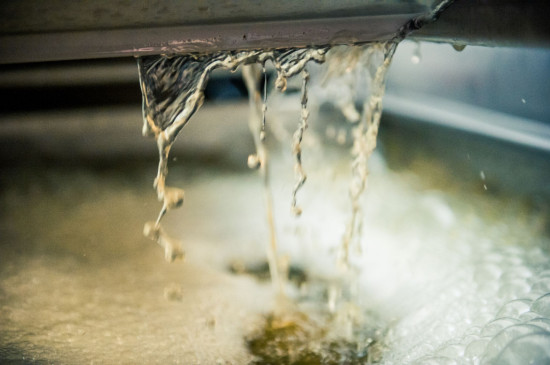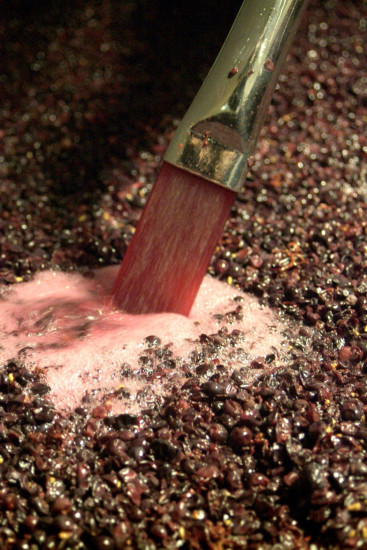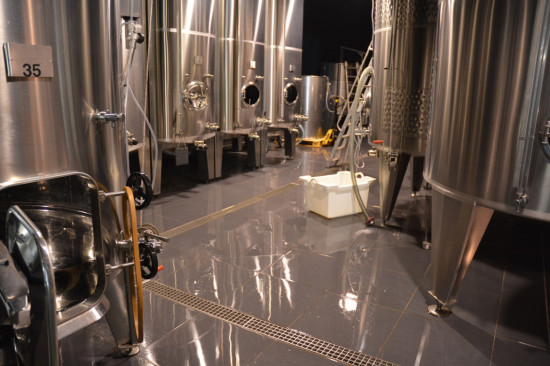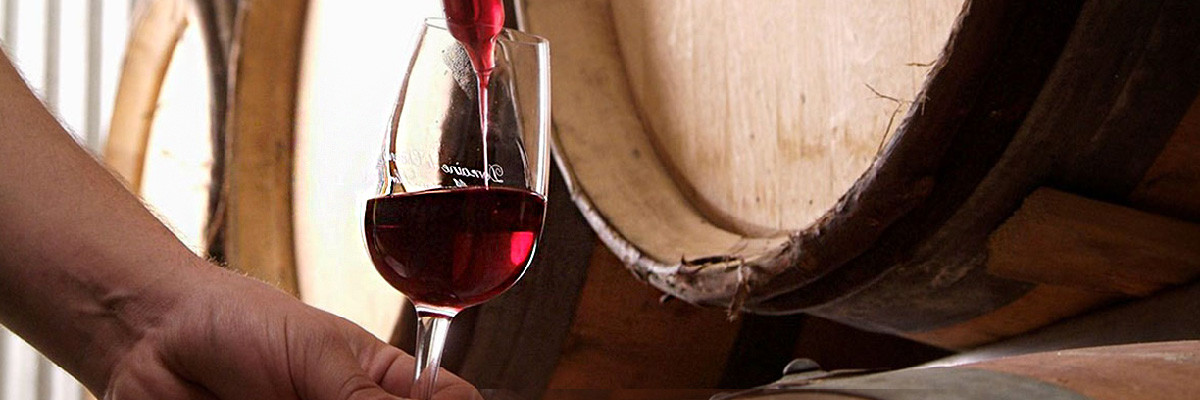Winemaking
Winemaking of white wines
At its most ripe, the harvest is pressed as soon as the grapes arrive.
For 12 to 24 hours, the must is racked, before it's placed into a fermentation tank, where it will ferment at a temperature of 64°F. Temperature control allows for longer fermentations, which gives more intense and delicate aromas.
Once fermentation is complete, a racking is made to remove the first layer of lees. The wine matures in tanks with a thin layer of lees.
The first bottlings occur between March and September, with some waiting more than a year before being bottled.


WINEMAKING OF RED WINES
After the stems from the ripe grapes are partially or completely removed, the fruit passes through a crusher, then placed into maceration and fermentation tanks.
The maceration allows contact with the grape juice and skins, which contain the coloring pigments. Temperatures of 77 °F to 86 °F must be reached in order to fully extract the color. Should there be a cooler-than-normal autumn, the grapes are heated in order to trigger the fermentation process.
To ensure homogeneity and optimum contact of the grape juice and skins, pumping and treading of the must is performed once or twice per day. When the desired color and body have been obtained, the must is drawn off and pressed. The press and free-run juices are then put into tanks or barrels.
Once the alcoholic fermentation is complete, the malolactic fermentation begins, which results in a natural loss of acidity. At this point, a first racking is made. Maturing begins, and it results in several additional rackings occurring during the various phases of clarification.
The first wines are bottled in spring; while wines matured in oak barrels wait one year before bottling.
WINEMAKING OF ROSÉ WINES
Rosé wines are created using two different methods:
The first method is known as “rosé de pressée”. It consists of pressing of the grapes as soon as they are harvested, just as for white wines. There is a short time of contact between the grape juice and the skin, and as a result, the color is lighter. The second method is called rosé de “saignée”. It begins with maceration, followed by racking until the desired color is obtained. This wine is stronger and more full-bodied.
The methods of maturing, stabilization, and clarification are the same as those used for white wines.



